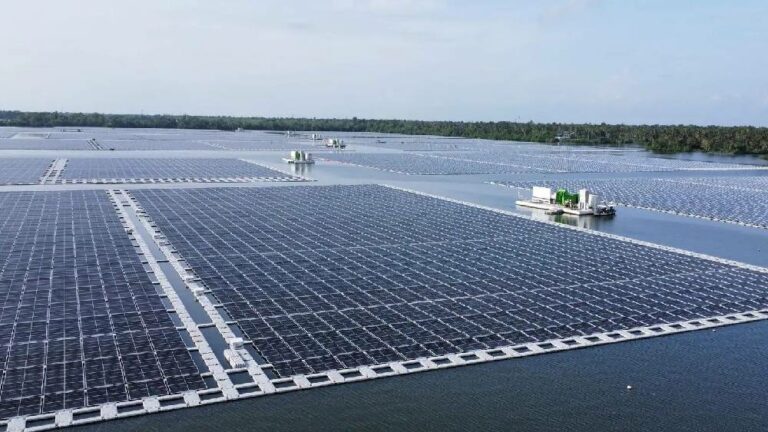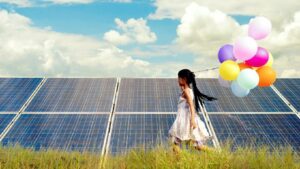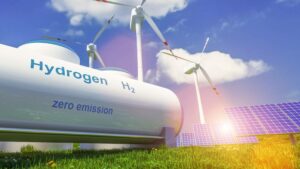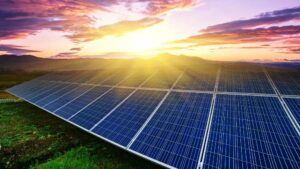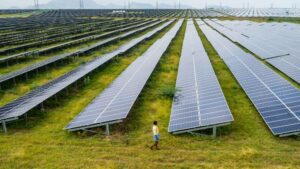India is a frontrunner in installation of Solar power generation projects. The country’s solar installed capacity was 71.61 gw as of August 31, 2023. Now emerging India is well on its way to achieving its target of 450 GW of renewable energy capacity by 2030, with solar and wind power leading the way. The country ranked third in the Renewable Energy Country Attractiveness Index (RECAI) by EY in 2021, with the United States retaining its top position, followed by China.
Quantum of sunshine that strikes the Earth exceeds the world’s total energy needs. And in recent years, there have been several innovations led by emerging technologies around Solar Panels, Inverters, Solar Storage Batteries and balance of control systems that help to automate the process of solar plant monitoring. This is latest happening in Solar Power Sector.
Building-Integrated Solar PV (BIPV)
For Indian cities, filled with skyscrapers, (BIPV) panels could easily contribute to the generation of solar energy without detracting from a building’s aesthetic appeal. The versatility of PV glass is perfect for letting daylight enter a building while producing energy. Customized panels that can be fitted into architectural features, such as canopies and terraces, can increase the use of solar energy. Incorporating transparent PV cells into architecture has many advantages, such as offering unlimited energy, decreased maintenance cost, improved sound insulation, and thermal optimization. It’s a great step toward a zero-carbon footprint in most environment friendly mechanism.
Floating Solar PV Panels
Lakes and Reservoirs provide huge opportunities to install Floating PV modules for producing solar energy. Few floating solar projects are set to be installed under the Flexibilization Scheme. One key advantage of floating solar panels is that water prevents them from overheating, leading to higher electricity production and lower maintenance costs, as the panels also remain dirt-free. Lower water evaporation and less algae formation are added environmental benefits.
MicroInverters
Solar energy is converted into electricity using a power inverter. The recent technological advancements in the inverter have led to microinverters being introduced, which are far more efficient and safer. Unlike a string inverter, which has many panels connected to it, a microinverter is connected behind every panel. It offers a “one inverter, one panel” solution. The output from all these inverters is combined in one cable that comes down to the meter box. This ensures that there is no high voltage running through the system, as the AC-DC conversion happens at the panel level, protecting homes and their occupants. If one inverter stops working, the other microinverters continue to operate, maintaining the efficiency of the solar system, without complete power loss. Another advantage of microinverters is the plug-and-play function, which means fewer screws, ensuring faster installation. The microinverter’s plug-and-play function also helps to make the entire solar system more scalable to suit future energy needs.
Solar Storage Batteries
Solar power storage batteries allow users access to solar power even when the sun goes down. Depending upon the size of the batteries, it can power anything from a house to a wide range of appliances. Some of the key advantages of using a solar battery are the reduced carbon footprint and greater energy independence. One recent development has been the switch of batteries from lead-acid batteries to lithium-ion. Solar batteries are constantly being innovated to offer a longer lifespan, reduced weight and safety.
Power Monitoring Systems
Solar power systems now come with their own monitoring system that is easily accessed through an app or the web. Leveraging the Internet of Things (IoT) and the cloud, customers now have access to their solar system via an app. The app will provide insights on the functioning of each device, power generation, and usage to create a smart, energy-efficient solar system. This will also allow service providers remote access to the solar system and reduce site visits. With countries globally pushing toward decarbonization and tapping into green energy sources, solar is an inevitable aspect of a sustainable future. The advancements in solar technology will be rapid, with technology becoming more versatile. In the coming years, solar technology will become more efficient, safer, and affordable as everyone works towards the goal of having a greener planet.




